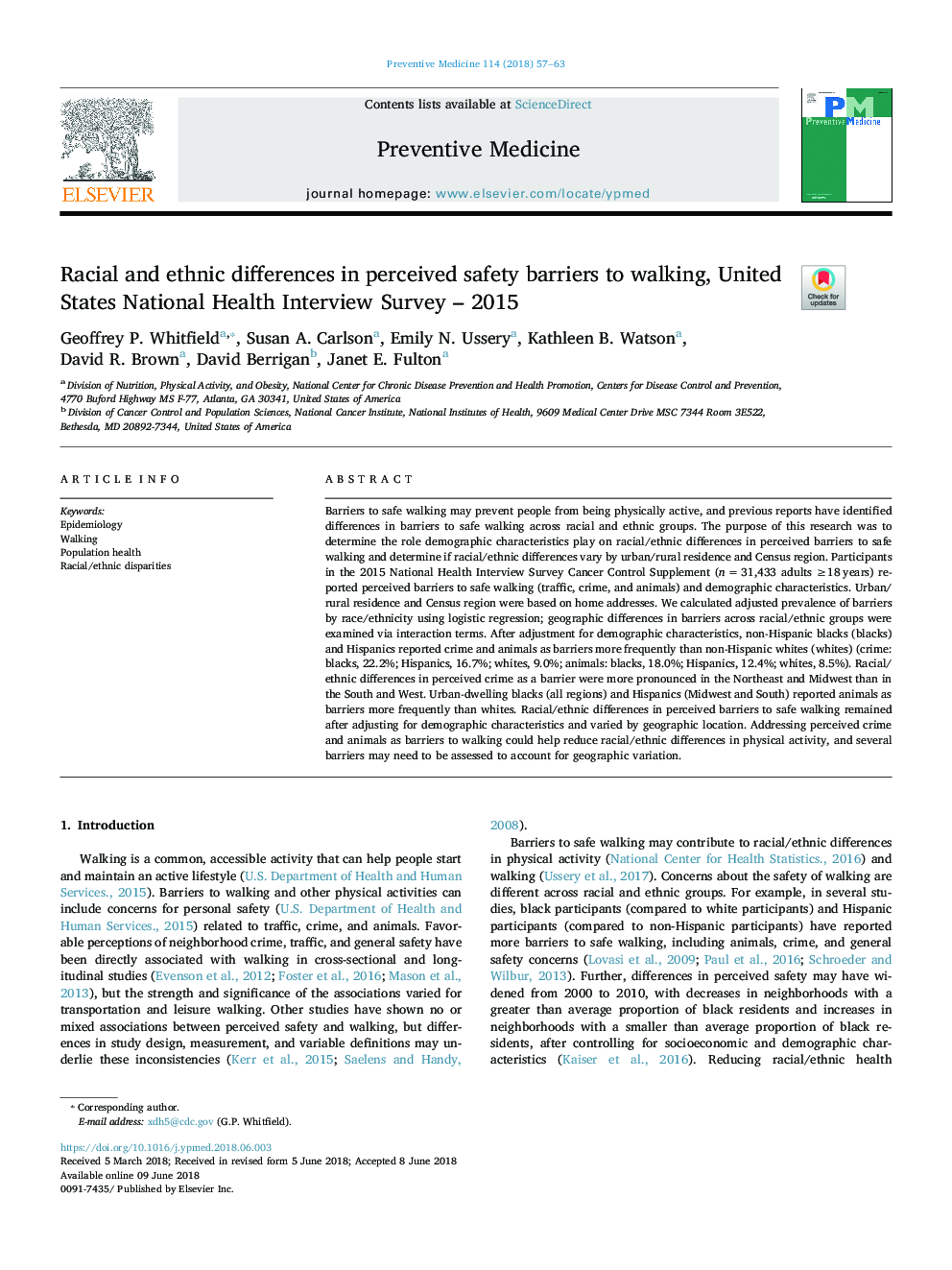| کد مقاله | کد نشریه | سال انتشار | مقاله انگلیسی | نسخه تمام متن |
|---|---|---|---|---|
| 8693430 | 1581598 | 2018 | 7 صفحه PDF | دانلود رایگان |
عنوان انگلیسی مقاله ISI
Racial and ethnic differences in perceived safety barriers to walking, United States National Health Interview Survey - 2015
ترجمه فارسی عنوان
اختلافات نژادی و قومی در موانع ایمنی درک شده راه رفتن، بررسی مصاحبه ملی بهداشت ایالات متحده - 2015
دانلود مقاله + سفارش ترجمه
دانلود مقاله ISI انگلیسی
رایگان برای ایرانیان
کلمات کلیدی
همهگیرشناسی، پیاده روی، سلامت جمعیت، اختلافات نژادی / قومی،
موضوعات مرتبط
علوم پزشکی و سلامت
پزشکی و دندانپزشکی
طب مکمل و جایگزین
چکیده انگلیسی
Barriers to safe walking may prevent people from being physically active, and previous reports have identified differences in barriers to safe walking across racial and ethnic groups. The purpose of this research was to determine the role demographic characteristics play on racial/ethnic differences in perceived barriers to safe walking and determine if racial/ethnic differences vary by urban/rural residence and Census region. Participants in the 2015 National Health Interview Survey Cancer Control Supplement (nâ¯=â¯31,433 adults â¥18â¯years) reported perceived barriers to safe walking (traffic, crime, and animals) and demographic characteristics. Urban/rural residence and Census region were based on home addresses. We calculated adjusted prevalence of barriers by race/ethnicity using logistic regression; geographic differences in barriers across racial/ethnic groups were examined via interaction terms. After adjustment for demographic characteristics, non-Hispanic blacks (blacks) and Hispanics reported crime and animals as barriers more frequently than non-Hispanic whites (whites) (crime: blacks, 22.2%; Hispanics, 16.7%; whites, 9.0%; animals: blacks, 18.0%; Hispanics, 12.4%; whites, 8.5%). Racial/ethnic differences in perceived crime as a barrier were more pronounced in the Northeast and Midwest than in the South and West. Urban-dwelling blacks (all regions) and Hispanics (Midwest and South) reported animals as barriers more frequently than whites. Racial/ethnic differences in perceived barriers to safe walking remained after adjusting for demographic characteristics and varied by geographic location. Addressing perceived crime and animals as barriers to walking could help reduce racial/ethnic differences in physical activity, and several barriers may need to be assessed to account for geographic variation.
ناشر
Database: Elsevier - ScienceDirect (ساینس دایرکت)
Journal: Preventive Medicine - Volume 114, September 2018, Pages 57-63
Journal: Preventive Medicine - Volume 114, September 2018, Pages 57-63
نویسندگان
Geoffrey P. Whitfield, Susan A. Carlson, Emily N. Ussery, Kathleen B. Watson, David R. Brown, David Berrigan, Janet E. Fulton,
